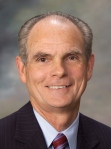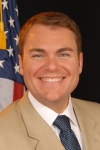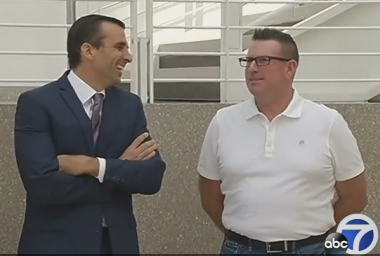Reporter Ed Mendel covered the Capitol in Sacramento for nearly three decades, most recently for the San Diego Union-Tribune. More stories are at Calpensions.com.
One of the two initiatives filed by a pension reform group last week would cap state and local government spending on retirement benefits for most new hires at 11 percent of pay, much like a Utah pension reform five years ago.
A co-author said the cap is “dramatically different” from the other initiative: a simplified version of a requirement that voters approve pensions for new hires, originally filed in June, that was rewritten in an attempt to clearly exempt current workers.
The leaders of the bipartisan coalition, former San Jose Mayor Chuck Reed and former San Diego City Councilman Carl DeMaio, said the original “voter empowerment” initiative was given a biased ballot summary that made voter approval unlikely.
By filing two initiatives, the group hopes to get at least one acceptable ballot summary from Attorney General Kamala Harris, a U.S. Senate candidate said by the reformers to be an ally of public employee unions opposed to their measures.
The reformers need a ballot summary that polls well enough to attract major campaign donors. DeMaio has estimated that $2.5 million to $3.5 million will be needed to gather the voter signatures required (585,407) to place a state constitutional amendment on the November 2016 ballot.
The original initiative requiring voter approval of pensions for new employees, and allowing employers to pay only half of their retirement benefit costs, might for many result in 401(k)-style investment plans, which would not require voter approval.
The new initiative limiting employer retirement payments for new hires to 11 percent of “base compensation” (13 percent for police and firefighters) would allow, for example, bargaining for pensions, 401(k)-style plans, or a combination of the two.
Voter approval would only be needed to lift the employer cap on payments or, as in the original initiative, lift a requirement that government employers pay no more than half the total cost of retirement benefits for new employees.
“It just focuses on the costs in the simplest way possible,” Reed told reporters last week, “because the cost is what is driving our concerns about the future of California and the future of municipal government in California. Services are being cut all over the state as a result of these costs.”

One of the half dozen current and former local government officials who signed the initiative filings, Pacific Grove Mayor Bill Kampe, is familiar with a failed attempt to cap pension payments.
Voters in Pacific Grove approved a 10 percent cap on city pension payments to the California Public Employees Retirement System. A superior court judge ruled that Measure R in 2010 violated the “vested rights” of current workers.
DeMaio told reporters last week the coalition looked at the Utah reform, led by former state Sen. Dan Liljenquist in 2010, that capped government retirement costs for new hires at 10 percent of pay.
New Utah employees choose between a 401(k)-style individual investment plan, now widespread in the private sector, and a “hybrid” that combines individual investments with a smaller pension, similar in concept to the plan for federal workers.
DeMaio said the coalition chose a “different approach” that allows state and government to “develop a variety of pension programs” that do not exceed the cap on employer costs, unless lifted by voters.
“In this case we looked at Bureau of Labor Statistics data on retirement costs for employers in the state of California and county by county,” DeMaio said, “and we believe that the cap that we have established is very reasonable.”
Dan Pellissier, a coalition consultant, said the initiative caps have room for the Brown pension reform requiring new hires to pay half the “normal” cost of their pension, which does not include the “unfunded liability” or debt from previous years.
The Utah reform, unlike the coalition cap, provides Social Security, 6.2 percent of pay each from employers and employees. The Utah contribution to a 401(k)-style plan, 10 percent of pay, is well above the average Utah company contribution, 3 percent of pay.
In California, reforms are limited by the “California rule,” a series of state court decisions widely believed to mean the pension offered on the date of hire becomes a “vested right,” protected by contract law, that can only be cut if offset by a new benefit.
The rule prevents the one thing, allowed in private-sector pensions, that the watchdog Little Hoover Commission and others say could quickly lower costs: cutting the pensions current workers earn in the future, while protecting amounts already earned.
Most California reforms, like Gov. Brown’s in 2012, are limited to new hires. That can take decades to yield significant savings as previously vested workers are slowly replaced, doing little meanwhile to reduce massive pension “unfunded liabilities” or debt.
Only 11 other states have the “California rule.” But reformers seldom push an initiative directly challenging the rule, apparently fearing a lack of support among voters and, even if approved, a costly and uncertain court battle.
A labor polling firm found two years ago that “California voters reject the idea of reducing or eliminating retirement benefits for current public employees,” calling it a “visceral negative response,” the Sacramento Bee reported.
Reed filed a lawsuit to change the Harris summary of his previous pension initiative. But last year a judge found the summary was not “false and misleading,” ruling instead that the initiative was indeed an attempt to overturn the “California rule.”
The opening phrases of the Harris summary of Reed’s initiative last year and the coalition initiative filed last June are identical: “Eliminates constitutional protections for vested pension and retiree healthcare benefits for current public employees . . .”
A statewide poll issued by the Public Policy Institute of California last month found that 72 percent of likely voters say public pension costs are a problem and 70 percent say voters should make decisions about retirement benefits.
As in previous PPIC polls, 70 percent favor giving new government employees a 401(k)-style plan rather than a pension. The change has strong bipartisan support: Republicans 74 percent, independents 69 percent, and Democrats 65 percent.
So, why aren’t the reformers proposing a direct switch to 401(k) plans for new hires?
Reed said not everyone in the broad coalition wants to eliminate public pensions. And like DeMaio, he said the coalition wants to let local governments and voters make the decisions.
“Since most of us are from local government, we don’t like the state telling us what to do,” Reed said.
A coalition of public employee unions, Californians for Retirement Security, issued a statement after the two initiatives were filed last week.
“It’s clear that the proponents of eliminating retirement security for teachers, firefighters, schoool employees and other public servants are more interested in playing politics and rewarding Wall Street than providing the retirement security all Californians deserve,” said Dave Low, the chairman.
“Their new proposals would ultimately do what their previous failed attempts would have done: create billions of dollars in costs for the state’s pension systems, jeopardize the ability to attract and retain teachers, police officers and other public employees and jeopardize a secure retirement for hard-working middle class families.”





















